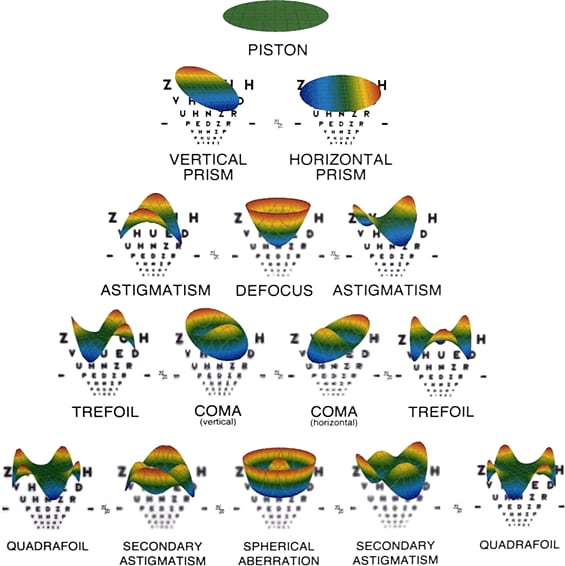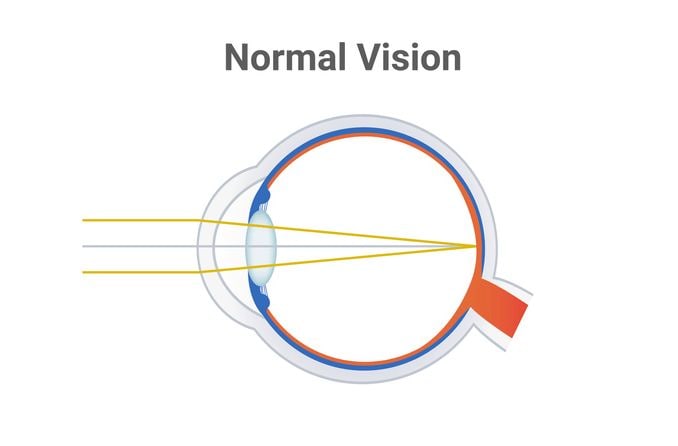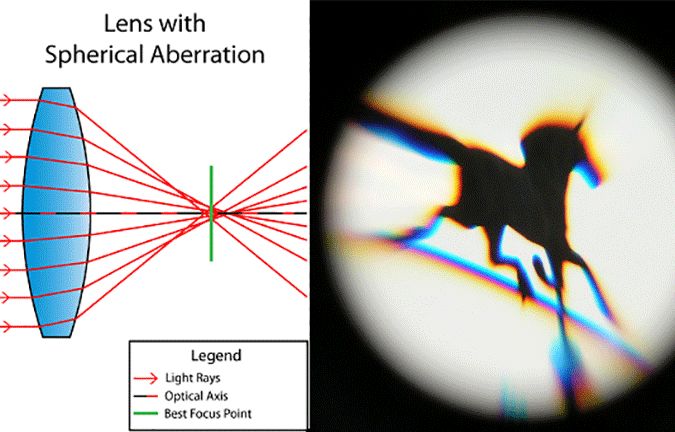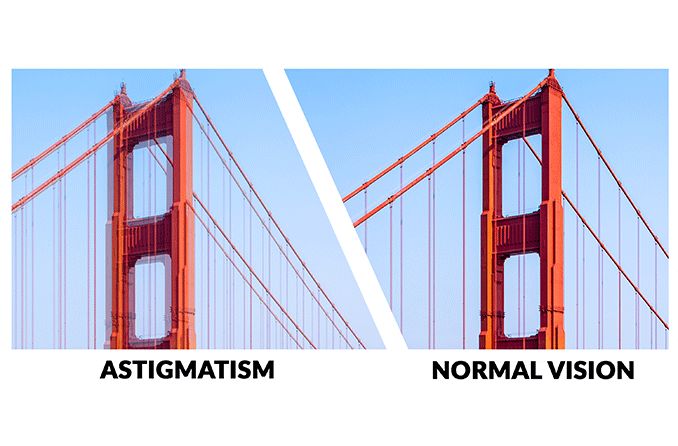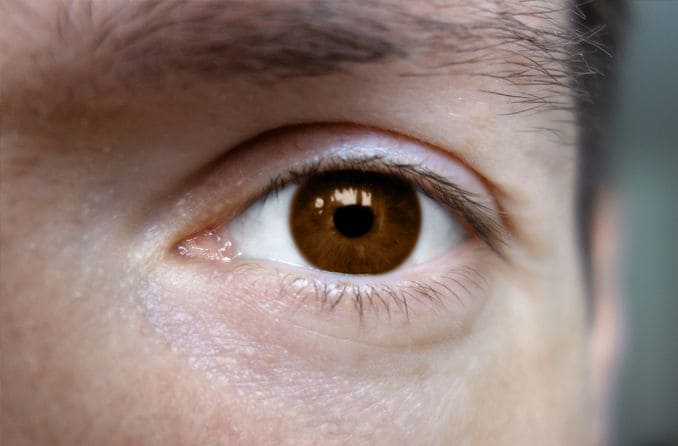Myopia
In myopia, light rays entering the eyes are focused at a point in front of the retina. This results in blurry distance vision. “Refractive myopia” can be due to a cornea or lens that is too steeply curved. It can also be due to the lens being too close to the cornea. More commonly, myopia is the result of the eyeball being too long relative to the focusing power of the eye. This is known as “axial myopia.” Axial myopia is the most common type of childhood myopia.
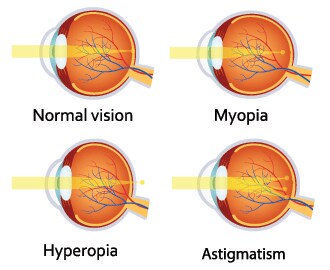
Myopia is considered to be the prevalent cause of refractive error in many countries. Researchers have found that myopia prevalence increases with several factors:
An alarming worldwide trend is the increased prevalence of myopia. Particularly in some East Asian countries, researchers have found that nearly four in five adults over age 18 are myopic. While not as high, the trend for increasing myopia has also occurred in the Western hemisphere. According to the American Optometric Association, myopia affects nearly one in three Americans.
Many strategies have been suggested to delay the onset, or slow the progression of, myopia, including:
Increased outdoor time
Topical low dose atropine
Novel myopia control glasses
Bifocal and progressive addition lenses
Overnight orthokeratology
Multifocal and dual focus contact lenses
These strategies are critical because high myopia can increase the risk of vision-threatening conditions. These include retinal detachment, retinal tears, early onset of certain cataracts, glaucoma and myopia maculopathy. As such, the increase in myopia prevalence throughout the world has led to lost opportunity and productivity for millions globally.
Hyperopia
In hyperopia, light rays entering the eyes from a distance are focused at a point behind the retina. This results in a blurry image. The most common cause of hyperopia is that the eyeball is too short relative to the focusing power of the cornea and lens.
The prevalence of hyperopia in the U.S. is about one in 10 Americans. In babies, hyperopia is the most common refractive error. This hyperopia typically decreases within a few years as the baby grows into toddlerhood.
The current trends of refractive error around the world indicate that the prevalence of hyperopia is low compared to myopia.
Astigmatism
Astigmatism is the result of the refractive error of the eye being different in the meridians of the eye. Usually, it is due to the curve of the cornea or lens being somewhat irregular. The correction that is required to correct astigmatism is more complex than a simple spherical correction of myopia or hyperopia.
Factors that increase the risk of astigmatism include:
SEE RELATED: Can astigmatism cause myopia?


